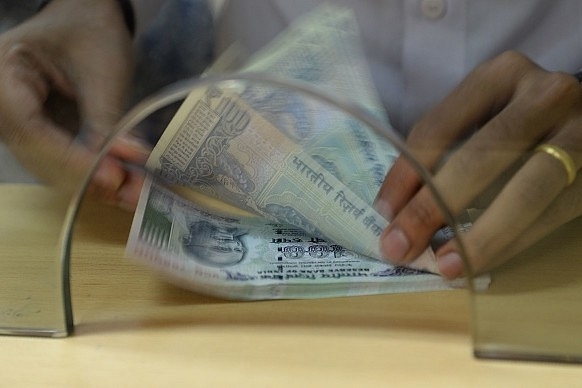
Double Failure: Has Government Given Up On Moves Towards A Less-Cash Economy?
The battle for a less-cash economy can be won only when digitisation is pushed throughout the ecosystem one geography at a time.
The government seems likely to snatch a double-failure from demonetisation (DeMo), with cash returning in a big way to the economy. According to the latest set of data put out by the Reserve Bank of India (RBI), currency with the public has soared to Rs 18.5 lakh crore, which is much higher than the Rs 15.44 lakh crore outstanding (ie, outside currency chests and banks) as on 8 November 2016. The total currency put out by the RBI has now touched Rs 19.3 lakh crore as at the end of May 2018.
While one reason for this rise in cash volumes can simply be the rise in gross domestic product (GDP) – higher growth means more cash requirement – the problem with this explanation is that it implies failure to move towards a less-cash economy. Once the public returns to cash-based transactions, weaning it away from this addiction will be tougher.
If cash use is on a continued upswing – an early inkling of that came last April before the Karnataka elections, when ATMs in Andhra Pradesh, Telangana and Madhya Pradesh started running dry – then one of the last two big justifications for DeMo falls apart. (The other justification which still holds is higher tax collections).
What is going on?
There could be several explanations.
First, the government, after seeing the economic fallout of DeMo and the widespread criticism of cash shortages, has chickened out of promoting digital payments beyond a point. It is thus encouraging the printing presses to dish out more to avoid any political fallout.
Second, with general elections less than a year away, the last thing the government wants is to slow down job-creating sectors such as real estate, construction and informal businesses, which tend to be cash-intensive.
Third, it is also more than likely that political parties have begun stocking up on cash well before the next round of crucial assembly elections in December (Madhya Pradesh, Chhattisgarh and Rajasthan, among others), and the Lok Sabha elections next year. DeMo or no DeMo, elections run on cash, and those hoarding it know that the government does not have the courage to create another cash squeeze after seeing how the economy was singed the last time.
Fourth, individuals are also probably restocking on cash, even though multiple modes of digital payments are available to everybody, at least in the cities. DeMo exacerbated the psychology of shortage when ATMs and bank counters ran dry, and as long as this psychosis remains, people will hoard cash. This is evident from the shifting pattern in credit and debit card use, where purchases at point-of-sale terminals have shifted towards credit cards (Rs 44,308 crore for credit cards versus Rs 41,857 crore for debit cards in March 2018). But debit card transactions continue to be much higher than credit cards by a factor of seven (Rs 3.08 lakh crore versus Rs 44,677 crore) because debit cards are being used mostly to draw cash (Rs 266,350 crore). (See the full RBI data here)
Fifth, there is a clear failure on the part of government to prevent a re-emergence of the cash economy. The fact is free card or digital payments are not enough to spur moves away from cash. Cash use falls only if a major part of the ecosystem shifts to digital steadily and at all levels of the social pyramid. For example, I may pay my domestic help through IMPS or NEFT, but if the first thing she does is draw the entire money in cash from an ATM, my shift to electronic payments amounts to zilch. To reduce cash usage, you need to reduce usage at the bottom of the pyramid, where cash is King, Queen and Ace. And this won’t happen until the ecosystem, where my domestic help operates converts substantially to digital. If she has to pay bus fares with cash, and the local kirana shop take only cash, she will prefer cash. My paying her by cheque does not matter.
While digital payments at the corporate level have obviously picked up, this is not translating to lower cash demand because cash has returned in a big way where it was has always been big – in low-value transactions, realty, construction, etc.
The only way to reverse this trend is to focus digital campaigns geographically – city by city, town by town. Unless digitisation focuses on converting more and more people to non-cash modes for day-to-day transactions in specific geographical areas, it will not succeed.
It is quite likely that the government does not want to impede an incipient recovery in the economy, post-DeMo and post the implementation of goods and services tax, by shifting the focus to digitisation and bringing back memories of scarcity in 2016-17. At the slightest hint of cash shortage, the opposition will make political capital of it, and make the shortage more acute. This is the last thing the government wants in the run up to a big election.
But digital payments are not an either/or option. There is no reason why even as cash continues to be pumped in by government and RBI, they cannot simultaneously incentivise digital modes for small value transactions. The battle for a less-cash economy can be won only when digitisation is pushed throughout the ecosystem one geography at a time.